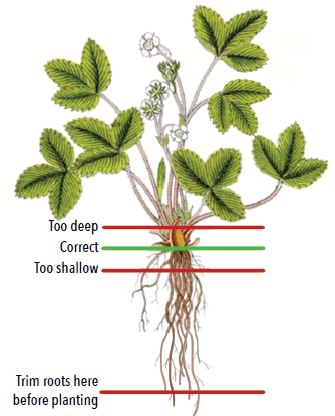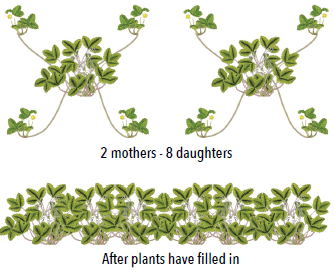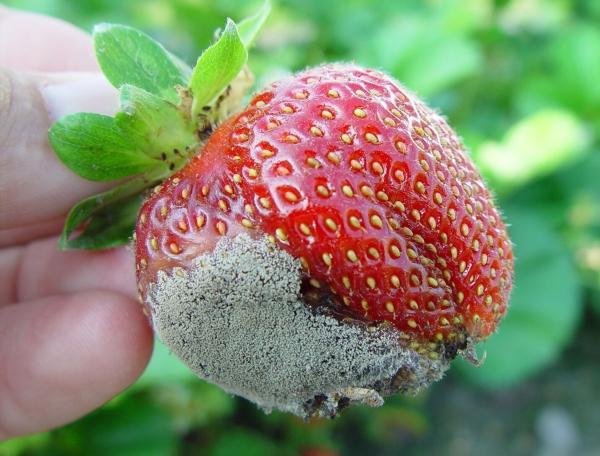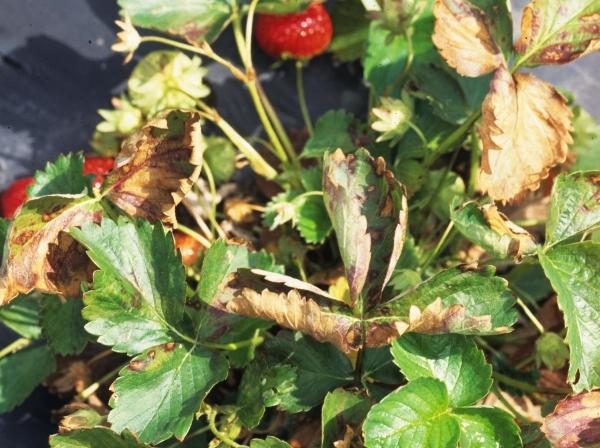About strawberries
Strawberry plants are low-growing perennials that can be cultivated successfully in rows, beds, or even pots and make an attractive groundcover when not fruiting. Today’s strawberry varieties got their start in the 18th century as hybrids between a North American species (Fragaria virginiana) and a South American species (Fragaria chiloensis).
The strawberry plant is composed of leaves, a crown (compressed, modified stem), and a root system. Fleshy buds emerge from the crown and produce leaves, flowers, and runners (stolons). As the runners grow from the original “mother” plant, they produce “daughter” plants where their nodes touch the soil.
Strawberry plants bloom as days lengthen in the spring. Buds that produce next year’s flowers are formed in late September as days shorten. Bees pollinate strawberry flowers.
The structure of strawberry fruits is unusual compared to other familiar species. Strawberry fruits have many small seeds (achenes) embedded in the fruit skin. The fruit flesh is actually the enlarged receptacle (fruit stem). The first fruits are the largest, and each succeeding set of berries will be smaller during the fruiting period. Insufficient bee visits, extreme weather (frost damage to early flowers), pests, and diseases are factors that can cause reduced yields and misshapen fruits.
Types and cultivars
- June-bearing: produce fruit in May and June; the most commonly grown type
- Day-neutral: longer flowering season, with most fruit ready for harvest in spring and late summer/early fall, with smaller amounts produced in between
| Recommended Strawberry Cultivars | ||
|---|---|---|
| Cultivar | Type | Comments |
| Annapolis | June-bearing | Medium to large, firm, glossy, light-red fruit. Good flavor. |
| Allstar | June-bearing | Very large, elongated, light-colored, and flavorful. Productive mid- to late-season harvest. |
| Earliglow | June-bearing | The standard for flavor and early-ripening varieties. Small to medium-sized deep-red fruit. |
| Jewel | June-bearing | Large, bright-red, firm berries. Prone to verticillium wilt and red steele. |
| Seascape | Day-neutral | Plants produce large, good-quality fruits throughout the season. |
| Tribute | Day-neutral | Vigorous, disease-resistant plants. Medium size, slightly acidic berries. |
| Tristar | Day-neutral | A University of Maryland release, the day-neutral standard. Sweet, disease-resistant. |





